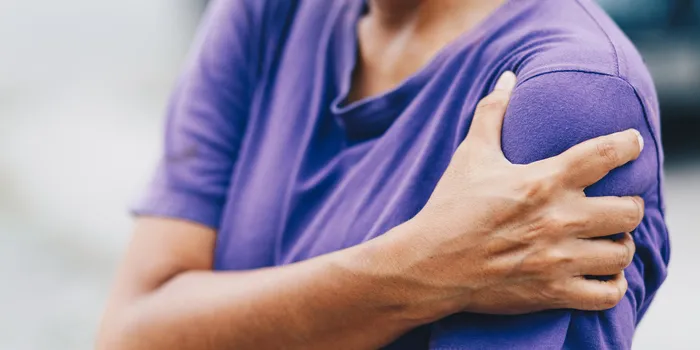When people have bleeding disorders, their blood fails to clot like it should when they have external or internal bleeding, leading them to bleed longer (although not faster) than someone without a bleeding disorder.
While internal bleeding is trickier to detect than external bleeding from cuts, nosebleeds or mouth bleeds, it’s critical that people with bleeding disorders, and caregivers, are aware of the signs and symptoms of internal bleeds, as these are more likely to require emergency medical attention.
Prompt recognition and proper treatment of an internal bleed can limit lasting damage, reduce pain and lessen the number of treatments needed to control the bleed. Discuss with your hemophilia treatment center (HTC) team or your healthcare professional what you should do in response to each of the bleeds below.
Joint Bleeding
Internal bleeding into a joint, especially in the ankles, elbows and knees, is the most common type of bleed in people with hemophilia. Joint bleeds may be caused by an injury—such as twisting an ankle, banging an elbow or falling on a knee—or may occur spontaneously. As blood fills the joint cavity, increased pressure causes several issues.
Signs and symptoms of joint bleeds
• Swelling and warmer skin around the joint
• Tingling or bubbling feeling in the joint
• Parents may notice a child’s reluctance to use the affected arm or leg
• Limited joint mobility
• Pain that typically gets worse the longer the bleed is untreated
Muscle Bleeding
Bleeds into the muscles of the arms, legs and pelvis can occur after a trauma (e.g., the muscle is hit or sprained, or because of an injection) or for no known reason. Muscle bleeds can cause significant blood loss inside the body and put pressure on nerves and blood vessels, potentially leading to serious damage.
Signs and symptoms of muscle bleeds
• Pain or aching in the muscle (pain in the hip, groin, stomach, buttocks or lower back is a possible sign of a pelvic muscle bleed)
• Tightness in the muscle even when it’s not in use
• Swelling
• Warm skin around the bleeding site
• Limping
• Unwillingness to use the affected arm or leg
• Numbness or tingling in the leg or arm like it has “gone to sleep,” a result of pressure on a nerve
• Veins in the arms or legs look larger than normal
Head Bleeding
Bleeding in and around the brain can occur from a blow to the head or may have no known cause. Because this type of bleed can cause permanent brain damage or even death, it is crucial to be extra aware of signs of a head bleed. If you or your child experiences even a mild head injury, call your doctor or HTC immediately to ask what steps to take. For serious head injuries, call 911 and go to the emergency room.
Signs and symptoms of head bleeds
• Prolonged headache
• Dizziness
• Low energy
• Slurred speech
• Irritability
• Difficulty waking up
• Blurry or double vision
• Difficulty walking straight or stumbling
• Sudden onset of vomiting without stomach distress
• Seizures
Gastrointestinal Bleeding
Bleeding in the stomach or intestines is thankfully not common in people with bleeding disorders. If it does occur, however, it can be a serious issue. If you suspect you or your child has gastrointestinal bleeding, call your healthcare team immediately for instructions.
Signs and symptoms of gastrointestinal (GI) bleeds
• Vomiting fresh blood or dark blood that looks like coffee grounds
• Bloody or black tar-like bowel movements
• Stomach pain
• Looking pale and feeling weak
• Bleeding from the rectum (this could be caused by angiodysplasia, a condition in which the blood vessels in the stomach or intestines become enlarged and prone to bleeding; angiodysplasia is more common in people with von Willebrand disease than other bleeding disorders)
Eye Bleeding
Bleeds inside the eye may occur because of an injury to the eye or for no known reason. This type of bleed is serious, as prolonged bleeding behind the eyeball can cause permanent vision loss. Call 911 or go to the emergency room immediately if you or your child experiences any of the following signs and symptoms.
Signs and symptoms of eye bleeds
• Pain or swelling in or around the eye
• Change in color in or around the eye (it may become red)
• Double or blurred vision or any other change in vision
Throat Bleeding
People with severe hemophilia are most at risk for this type of bleed. A bleed in the throat can cause swelling that blocks the windpipe. Call 911 immediately if you notice any of the signs and symptoms below.
Signs and symptoms of throat bleeds
• Swelling or discoloration of the skin of the neck
• Choking
• Trouble swallowing or breathing
• Coughing up or throwing up blood without a nosebleed or mouth bleed (swallowed blood upsets the stomach and can cause vomiting)
• Change in tone of voice

